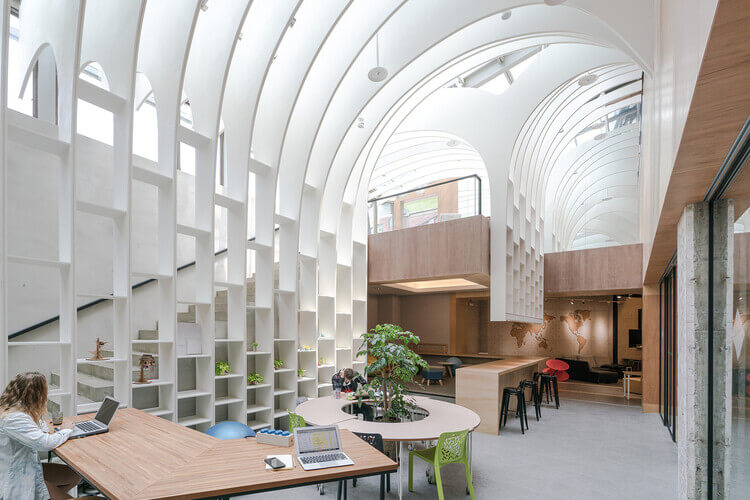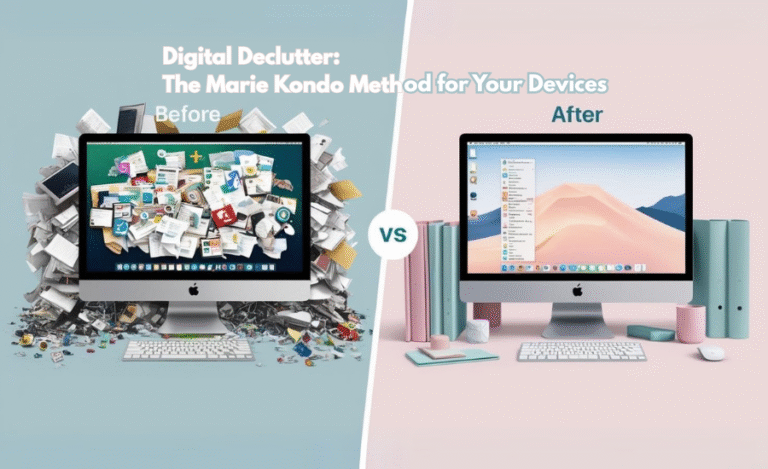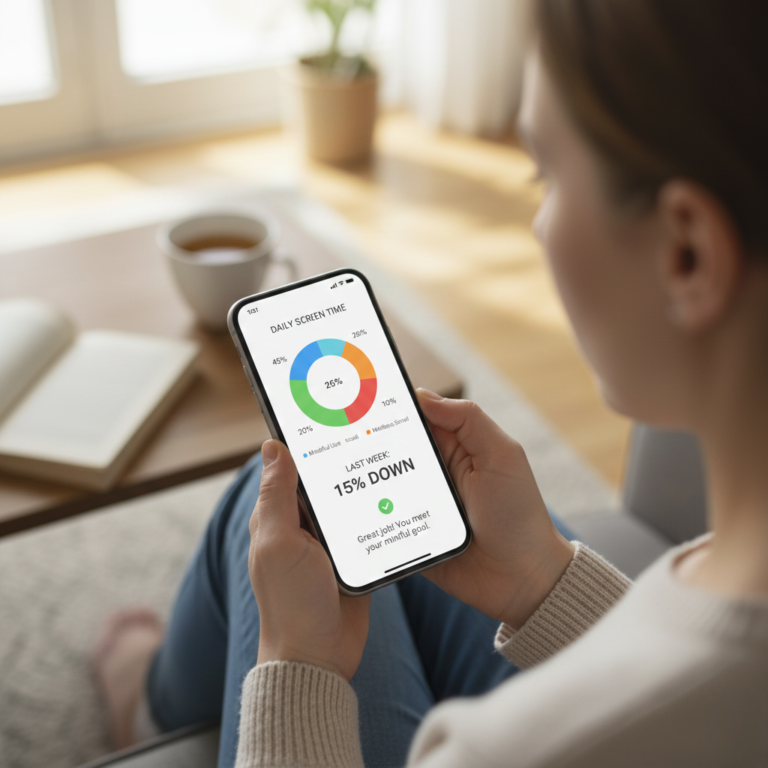
Digital wellness architects specialize in creating home environments that promote a healthy balance between technology and daily life. By thoughtfully integrating design elements that reduce digital distractions and encourage mindful tech use, these professionals help individuals and families reclaim focus, connection, and well-being.
From layout planning to smart device placement, digital wellness architects craft spaces that support intentional living. Their approach isn’t just about aesthetics—it’s about fostering healthier habits. Whether it’s designing screen-free zones or optimizing natural light to reduce screen fatigue, digital wellness architects play a crucial role in shaping homes that support mental clarity and a more balanced lifestyle.
While the physical transformation of your spaces provides the foundation for change, successfully inhabiting your redesigned environment requires intentional adaptation. This integration phase transforms architectural modifications into lasting behavioral shifts.
Effective digital wellness architecture works with your natural tendencies rather than constantly fighting against them.
Research from the Journal of Environmental Psychology demonstrates that architectural interventions achieve 64% greater behavior change when accompanied by conscious adaptation strategies compared to design modifications alone.
A longitudinal study of residential technology patterns found that households that implemented structured “inhabitation protocols” maintained 71% of their initial digital behavior improvements after one year, compared to just 24% for those who made only physical changes.

Implement these strategies to fully inhabit your tech-balanced home:
Habit Alignment
Create new behavioral patterns that leverage your architectural changes:
- Establish morning routines that utilize non-digital spaces first
- Develop explicit device transition rituals when moving between zones
- Create regular “circulation patterns” that incorporate tech-free areas
- Design workday schedules that utilize different spaces for different activities
- Implement evening protocols that take advantage of sleep-supporting design
Environmental Communication
Ensure your spaces clearly convey their intended use:
- Consider subtle signage for initial habit formation
- Create consistent visual cues across different spaces (colors, materials)
- Use lighting to signal different technology zones
- Develop non-verbal indicators of tech-free spaces (plants, natural materials)
- Ensure guests understand your environmental intentions without awkwardness
Maintenance Systems
Establish protocols that prevent architectural intention drift:
- Schedule weekly “reset” sessions to maintain intended design functions
- Create quarterly technology audits to assess device creep
- Develop seasonal variations that accommodate changing needs
- Implement regular technology-free periods to reinforce architectural intentions
- Establish clear protocols for introducing new devices into the home
Consensus Building
Develop shared understanding with household members:
- Create explicit agreements about different spaces’ intended use
- Hold regular “space assessment” conversations to address emerging issues
- Develop compromise solutions for conflicting spatial needs
- Implement graduated technology policies for children based on age
- Recognize and accommodate essential individual differences
The ultimate goal isn’t rigid adherence to design rules but thoughtful inhabitation of intentional spaces.
As noted environmental psychologist Dr. Simon Crawford explains, “The most successful technology-balanced homes aren’t those with the strictest boundaries, but those where the architecture naturally guides behavior in the desired direction.” The key is allowing your redesigned environment to gradually reshape your technology habits without constant conscious effort.
Remember to adapt your inhabitation strategies across different life phases and seasons. Create specific protocols for:
- High-intensity work periods
- School vacations for families
- Guest accommodations
- Illness or recovery periods
- Weather constraints that limit outdoor access
“The measure of successful digital wellness architecture isn’t how it looks in photographs, but how it shapes behavior in daily life.”
Modeling Environmental Intentionality: Influencing Without Imposing
Your tech-balanced home creates opportunities to positively influence others through environmental example rather than verbal persuasion.
As you implement these principles, visitors will naturally experience a different relationship with technology while in your space. This creates organic opportunities to share architectural wellness concepts without explicitly promoting your choices.
Research consistently shows that experiencing an environment firsthand is more persuasive than any description of that environment’s benefits.
A study from Columbia University’s Spatial Psychology Department found that individuals who spent time in intentionally designed low-tech environments were 5.2 times more likely to implement similar changes in their own homes compared to those who merely read about or heard descriptions of such spaces.
Evidence from hospitality psychology reveals that spatial design creates “experiential permission structures” that temporarily override habitual behaviors.
Consider these approaches to mindfully sharing your environmental philosophy:
Guest Experience Design
- Create intuitive wayfinding that naturally guides visitors’ technology use
- Provide convenient alternatives to common digital dependencies
- Design guest accommodations that facilitate digital disconnection
- Offer simple explanations of unusual features when necessary
- Respect visitors’ digital autonomy while providing environmental support
Knowledge Sharing
- Respond to curious questions with practical insights rather than philosophical positions
- Focus on specific benefits you’ve experienced rather than prescribing changes
- Share the incremental nature of your implementation process
- Acknowledge challenges and compromises in your approach
- Express appreciation when others respect your environmental intentions
Child-Focused Applications
- Create dedicated child zones that naturally encourage non-digital play
- Design storage that makes non-screen activities visually prominent and accessible
- Implement age-appropriate environmental cues rather than rigid rules
- Develop space-based rather than time-based technology guidance
- Recognize developmental differences in environmental response
Community Building
- Host gatherings that naturally showcase your environmental approach
- Connect with like-minded individuals interested in intentional design
- Share resources without judgment or pressure
- Highlight diverse approaches to technology-balanced environments
- Recognize cultural and contextual differences in spatial relationships
Remember that your most powerful influence comes through the experience of your space rather than explanations of your philosophy.
When visitors experience the psychological benefits of your intentionally designed environment – the sense of calm, the quality of interaction, the depth of sleep – they naturally become curious about your methods. Be prepared to share specific design strategies when invited to do so.
“Environmental design speaks a universal language that transcends verbal persuasion.”
Troubleshooting: Navigating Common Architectural Challenges
Even thoughtfully designed tech-balanced homes face obstacles in implementation and maintenance. Here are solutions to the most common challenges:
Challenge: Open-Concept Limitations
Solution:
- Create “visual architecture” using furniture groupings, area rugs, or pendant lighting
- Implement movable boundaries (decorative screens, curtains, bookshelves on casters)
- Use height variations to define different functional zones
- Create activity-based micro-environments within the larger space
- Deploy sound-absorbing elements to create acoustic separation
- Consider retractable or fold-away solutions for temporary space division
Challenge: Small Space Constraints
Solution:
- Prioritize multifunctional furniture with technology-specific features
- Implement vertical storage solutions for both tech and non-tech items
- Create convertible spaces that transform between different technology levels
- Design time-based solutions where spaces serve different functions at different hours
- Focus on psychological boundaries when physical ones aren’t possible
- Deploy signaling systems (lighting, sound) to indicate space function changes
Challenge: Family Technology Conflicts
Solution:
- Create designated spaces reflecting different family members’ technology preferences
- Develop zone-based rather than time-based technology guidelines
- Implement visual indicators of current space function
- Design parallel activity areas where different engagement levels can coexist
- Create transitional spaces between high-tech and low-tech zones
- Focus on compelling alternatives rather than technology restriction
- Consider developmental staging of environmental interventions for different ages
Challenge: Work-From-Home Requirements
Solution:
- Implement “technology containment” through dedicated work zones
- Create physical closing rituals for work equipment (cabinets, screens, covers)
- Design distinct sensory environments for work versus non-work spaces
- Develop transition zones between work and personal areas
- Consider separate device strategies for work versus personal technology
- Implement time-based environmental shifts for spaces serving multiple functions
- Create clear visual indicators when work mode is active/inactive
Challenge: Smart Home Integration
Solution:
- Select systems with physical control alternatives to app-only interfaces
- Design technology “layers” that maintain functionality during digital breaks
- Create zones with different automation levels for different purposes
- Implement voice-controlled systems that reduce rather than increase screen dependence
- Design manual overrides that remain intuitive and accessible
- Focus on automation that reduces digital administrative burden rather than creates it
- Consider screen-free central controls in transition spaces
When to Consider Professional Help
If your architectural challenges feel overwhelming despite consistent effort, consider these resources:
- Interior designers specializing in digital wellness environments
- Professional organizers with technology management expertise
- Environmental psychologists who consult on residential spaces
- Specialized contractors familiar with technology-controlling modifications
- Home automation specialists who prioritize human-centered design
Remember that seeking expertise reflects wisdom rather than inadequacy in navigating our complex relationship with technology and space.
The Environmentally Mindful Life: Your New Relationship With Home and Technology
Congratulations on exploring this comprehensive guide to creating a tech-balanced home. By implementing these architectural and design strategies, you’re joining a growing movement of individuals who recognize that our physical environments powerfully shape our digital behaviors – and that thoughtful design can help technology serve human flourishing rather than undermine it.
The benefits extend far beyond reduced screen time:
- Enhanced family connections through spaces designed for interaction
- Improved sleep quality through bedroom environments optimized for rest
- Increased productivity in properly designed work environments
- Greater mindfulness facilitated by intentional transition spaces
- Reduced digital dependence through compelling analog alternatives
- More meaningful leisure through environmentally supported activities
The homes that will nurture wellbeing in our hyperconnected future won’t be those that reject technology entirely or embrace it uncritically, but those that thoughtfully incorporate it into a human-centered design philosophy.
Take action today:
- Download our free Digital Wellness Home Assessment Kit
- Select your first space for transformation within the next week
- Identify three design interventions to implement immediately
- Share your intention with your household members
“The spaces we inhabit shape the lives we lead. Design accordingly.”
Frequently Asked Questions
Won’t creating technology boundaries in my home make it feel unwelcoming or inconvenient?
This common concern reflects a misconception about digital wellness architecture. The approach isn’t about creating a technologically hostile environment, but about designing spaces that support intentional rather than habitual technology use.
Well-designed tech-balanced homes actually feel more welcoming because they’re optimized for human experience rather than device convenience.
The key distinction is between designing for technology accommodation versus technology domination. Many homeowners report that guests find their spaces unusually relaxing and engaging precisely because the environment gently guides more meaningful interaction and presence.
I rent my home and can’t make major modifications. Is architectural intervention still possible?
Absolutely. Many of the most effective interventions require no permanent changes at all. Furniture arrangement, portable room dividers, strategic lighting, and thoughtfully designed “technology stations” can transform a space without altering its structure.
Renters should focus on mobile solutions (furniture on casters, free-standing screens), removable modifications (temporary wallpaper, tension rods), and curated objects that create psychological boundaries.
The principles of environmental psychology work regardless of whether changes are permanent or temporary. In fact, some of the most innovative solutions come from constraints – rental properties often feature particularly creative approaches to technology zoning.
My partner/roommates have very different technology preferences. How can we create spaces that work for everyone?
Navigating shared spaces with divergent digital preferences is indeed challenging but entirely possible with thoughtful design. Start by having explicit conversations about different needs and identifying potential compromise zones. Consider creating explicitly personalized areas alongside shared spaces with agreed-upon technology protocols.
Time-based solutions often work well in shared environments – the same space might have different technology expectations at different hours.
Most importantly, focus on creating compelling experiences for everyone rather than imposing restrictions. Well-designed spaces with graduated technology zones can accommodate different preferences within a cohesive overall environment.
Won’t making these changes be expensive and time-consuming?
While comprehensive home redesign can indeed involve significant investment, the core principles of digital wellness architecture can be implemented at any budget level. Many effective interventions involve simply rearranging existing furniture, creating intentional device storage, or establishing clear protocols for different spaces.
Consider implementing changes in phases, beginning with the areas that most significantly impact wellbeing (typically bedrooms and primary social spaces).
Many households find that even small, strategic modifications – like creating a dedicated device drop zone or establishing one completely tech-free area – yield substantial benefits. The investment of thought often matters more than the investment of resources.
How do I maintain these changes when technology is constantly evolving?
This question highlights one of the strengths of the architectural approach to digital wellness. Rather than focusing on specific technologies (which indeed change rapidly), this method establishes enduring principles about human-centered environments that remain relevant regardless of what devices emerge.
The key is designing spaces based on human needs and activities rather than around particular technologies. Additionally, incorporating regular environmental reviews (quarterly is often ideal) allows for thoughtful integration of new technologies rather than unconscious adoption. The most successful tech-balanced homes aren’t static but evolve deliberately alongside technological change, guided by consistent principles rather than rigid rules.
Transform the concepts from this guide into immediate action with our comprehensive implementation toolkit. This downloadable resource includes:
- Room-by-Room Digital Wellness Assessment Checklist
- Space Planning Templates for Different Home Types
- Technology Zoning Worksheets
- Family Discussion Guide for Shared Spaces
- Troubleshooting Guide for Common Spatial Challenges
- Before/After Documentation System






